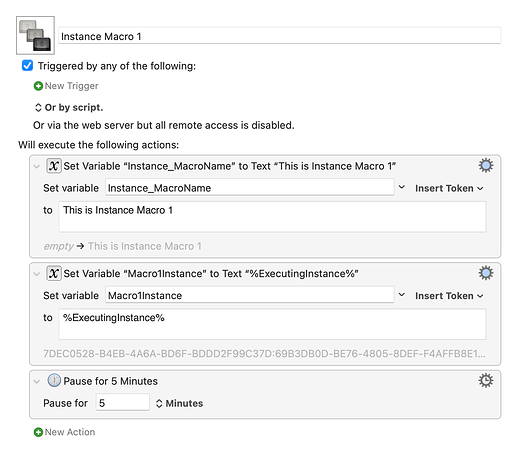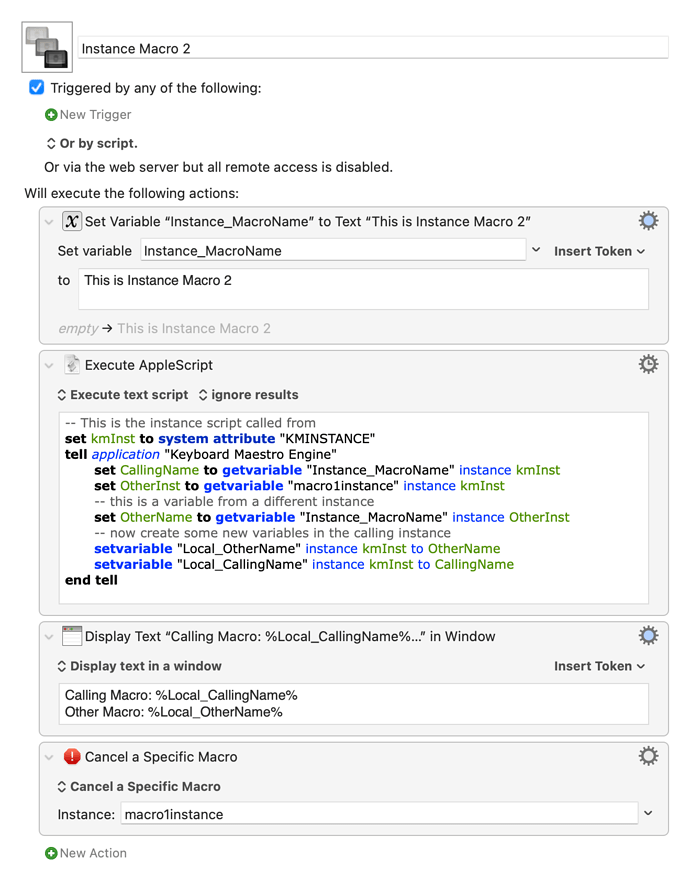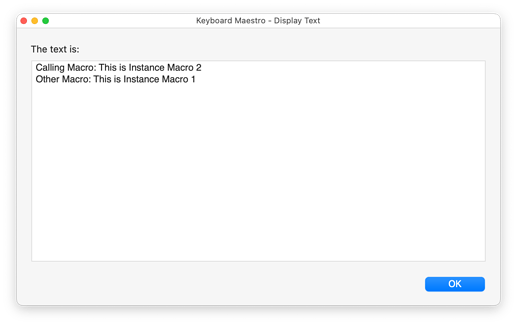Oh I know what Peter meant now. Duh.
Pass in the value of an executing instance FROM A DIFFERENT INSTANCE and you can retrieve the values from that instance too.
2 macros below. First saves it's instance in a global variable. Sets an instance variable named Instance_MacroName to it's name.
Second set's the same variable name Instance_MacroName to it's own name, then calls an AppleScript. That AppleScript pulls the value of Instance_MacroName from the other Instance and from the Instance that called it and then sets some local variables (in the calling script) with the values. Values are displayed in a window and the first instance is cancelled.
Macro 1
Macro 2
Results
Macro Downloads
Instance Macro Examples.kmmacros (5.0 KB)
(Edit: forgot the results)


